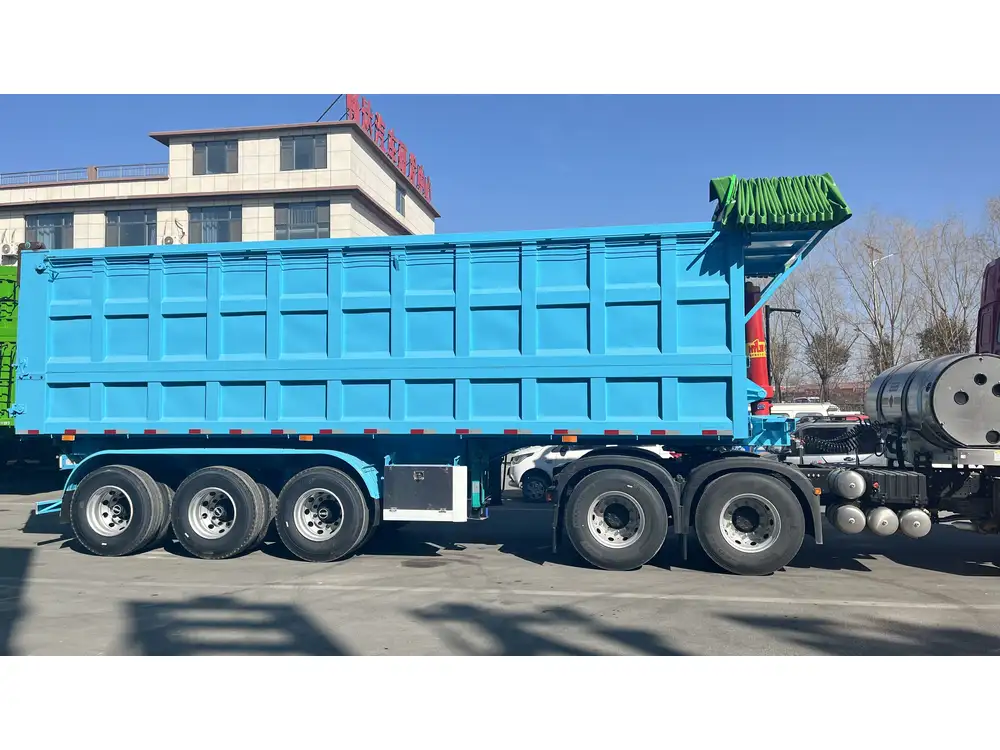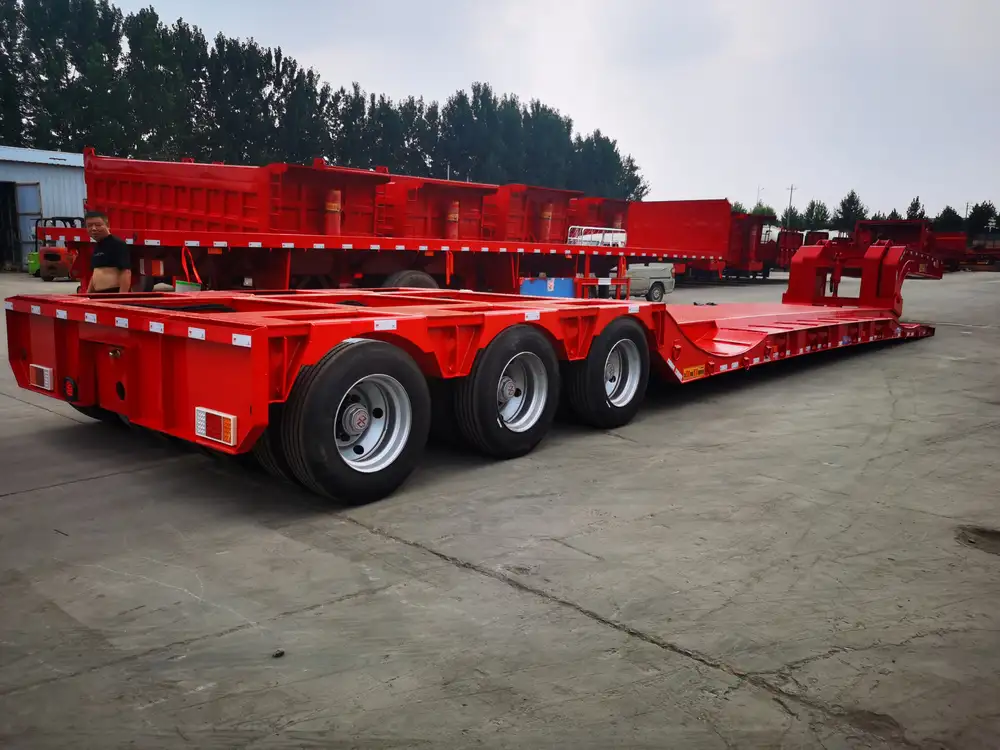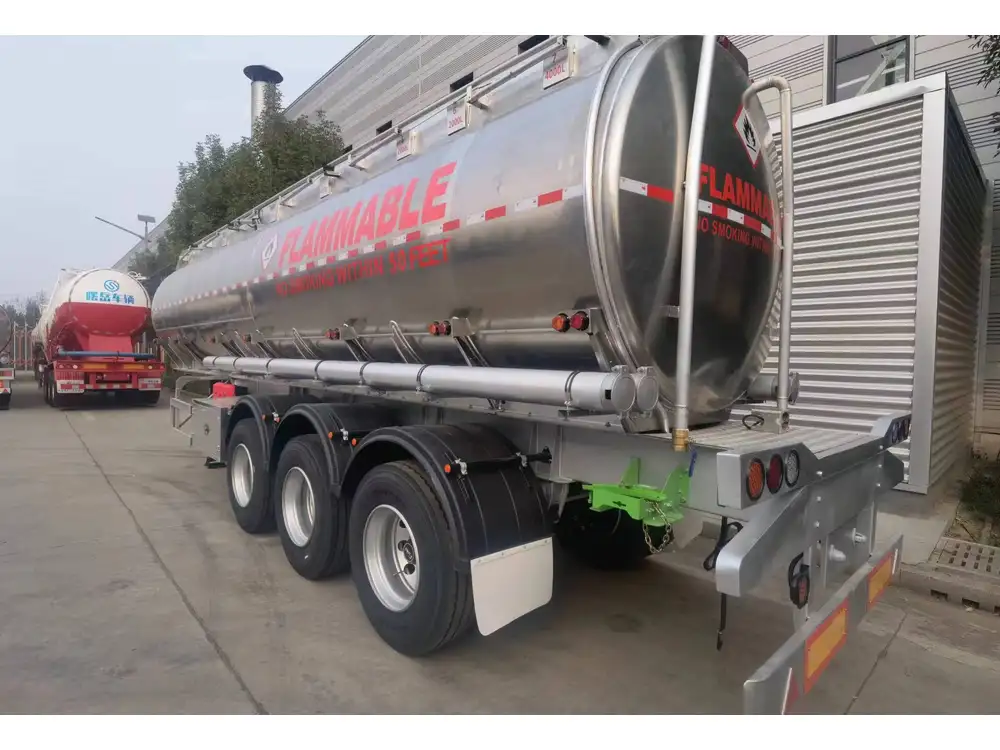Mastering the skill of backing up a semi-trailer is not merely an ancillary ability; it’s an essential component of safe and efficient operation in the trucking industry. This detailed guide aims to provide you with the foundational knowledge, techniques, and tips necessary to maneuver a semi-trailer with precision, ensuring enhanced safety and optimal performance on the road.
Understanding the Mechanics of a Semi-Trailer
Before diving into the nuts and bolts of backing up, it’s crucial to grasp how a semi-trailer operates. A semi-trailer differs from a traditional trailer due to its unique design, which relies on a tractor unit for support. This section will explore the essential components that influence backing maneuvers:
| Component | Description |
|---|---|
| Tractor Unit | The front part of the combination that houses the engine, controls, and driver’s cab. |
| Fifth Wheel Coupling | The mechanism that connects the semi-trailer to the tractor, allowing for a pivotal connection. |
| Axles | Positioned beneath the trailer and responsible for weight distribution and stability during maneuvers. |
| Brakes | Semi-trailers are equipped with air brakes, which require proper operational understanding for safe backing practices. |
Tips for Getting Started
Familiarize Yourself with Your Vehicle: Before any backing attempt, take the time to thoroughly understand your specific semi-trailer and tractor unit configurations. Adjust mirrors and seating positions to achieve the best visibility.
Evaluate Your Surroundings: Conduct a visual inspection of your environment. Look for obstacles, tire tracks, and any potential hazards that could impact your backing maneuver.
Safety First: Always wear your seatbelt, and do not hesitate to ask a spotter for help if the situation calls for it, particularly in tight spaces.

Technique Fundamentals: The Steps to Backing a Semi-Trailer
Successfully backing a semi-trailer requires both technique and practice. Below is a structured approach to perfecting this skill.
1. Positioning the Tractor
To begin, position your tractor unit parallel to the parking area or location into which you wish to back the trailer.
- Trial Run: Make a preliminary pass, assessing the area, and mentally map where you want to maneuver.
- Angle of Approach: Ideally, your entry angle should be around 30 degrees. This helps in aligning the trailer with the desired direction of travel.
2. Adjusting the Mirrors
Properly adjusted mirrors are paramount for backing up a semi-trailer. Position yourself to see the rear of the trailer effectively:
- Side Mirrors: These should reflect the entire length of the trailer to give you a clear view of any obstacles.
- Convex Mirrors: Use these to identify nearby vehicles or pedestrians that may not be visible through traditional mirrors.

3. Initiating the Backing Maneuver
Engage the reverse gear and proceed slowly. Control your speed by gently easing off the accelerator rather than jerking the vehicle in reverse.
- Use Small Steering Inputs: The slightest turn of the steering wheel can significantly affect the trajectory of the trailer. Make small adjustments as you observe the path of the trailer.
- Look in the Direction of Travel: Always keep your head turned to follow the trailer’s path using both mirrors. Avoid relying solely on the rearview mirror.
4. Counter-Steering Techniques
One of the challenges of backing a semi-trailer is understanding the concept of counter-steering:
- Directing the Trailer: If the trailer begins to veer to the right, steer to the left to guide it back on path.
- Follow the Trailer’s Angle: Your goal is to align the trailer with the intended parking spot without oversteering.
Adjustments During Backing
Adaptability is key to successful backing. Here are some scenarios you may encounter and how to adjust your approach accordingly.
| Scenario | Adjustment Needed |
|---|---|
| Tight Spaces | Repeatedly pull forward to realign; use smaller steering inputs. |
| Uneven Ground | Monitor wheel positioning; slowly navigate, ensuring equal weight distribution. |
| Narrow Parking Lots | Consider a three-point turn to realign your approach if necessary. |

Final Checks Before Alighting
Upon completing your backing maneuver, conduct a final inspection:
- Ensure Complete Clearance: Confirm that the trailer and tractor are aligned and free from obstructions.
- Secure the Load: Before exiting the cab, assess that the trailer is situated correctly and secure.
Common Backing Mistakes and How to Avoid Them
Understanding common pitfalls is essential for refining backing skills. Here are mistakes to watch out for:
1. Oversteering
A frequent error among new drivers is overreacting with the steering wheel. Instead of large movements, prioritize small corrections.

2. Poor Mirror Use
Failing to utilize mirrors effectively can lead to misjudgments in spacing and obstacles. Consistently check all mirrors, allowing for better spatial awareness.
3. Lack of Patience
Backing a semi-trailer requires time and patience. Rushing can lead to errors and accidents, so always opt for a measured pace.
Advanced Backing Techniques: Enhancing Your Skillset
Once you’ve mastered the fundamentals, consider exploring advanced techniques to further enhance your backing abilities.

1. The “Jackknife” Maneuver
A jackknife maneuver involves a sharper angle, useful in tight spots:
- Execution: Begin as if you will back straight, then steer sharply toward the intended area after moving back a bit.
- Purpose: This method can help in saving space, yet requires experience to avoid getting stuck.
2. Backing Up With a Load
Handling a loaded semi-trailer is an entirely different challenge. Weight distribution can shift, affecting handling. Here are key pointers:
- Monitor for Swings: Be mindful of the trailer swinging out wider with the load, adjusting your steering accordingly.
- Use of Spotters: When backing with a load, maintain communication with a ground spotter who can help you gauge distances and safety.
Practicing Your Backing Skills
While theoretical knowledge is essential, practical application solidifies your skillset. Below are strategies to practice effectively:
- Utilize Empty Parking Lots: Find a safe, open space to practice backing without distractions.
- Simulate Various Environments: Set up cones or markers to mimic tight spaces or obstacles you may encounter on the road.
- Feedback Loop: Record your practice sessions and review them, learning from each maneuver.

Conclusion
Mastering how to back up a semi-trailer is an art that combines technique, mindfulness, and practice. As the trucking industry evolves and demands more from drivers, possessing exceptional backing skills becomes a fundamental asset.
By understanding the mechanics, employing effective techniques, and avoiding common mistakes, we can ensure not just our safety, but that of others on the road. Remember, patience and practice are your best allies in this invaluable skill. With dedication, you can become a proficient user, navigating even the tightest spaces with poise and confidence.
Additional Resources
- Tutorial Videos: Search for backing tutorials on platforms like YouTube to visualize techniques.
- Local Training Programs: Consider enrolling in professional driving courses that emphasize backing mechanics.
- Driving Simulators: Use driving simulation software to practice backing without the physical constraints of a trailer.
Armed with this wealth of knowledge, you’re now prepared to take on the challenges of backing up a semi-trailer. Let this guide serve as a lasting resource on your journey to mastering the road.



